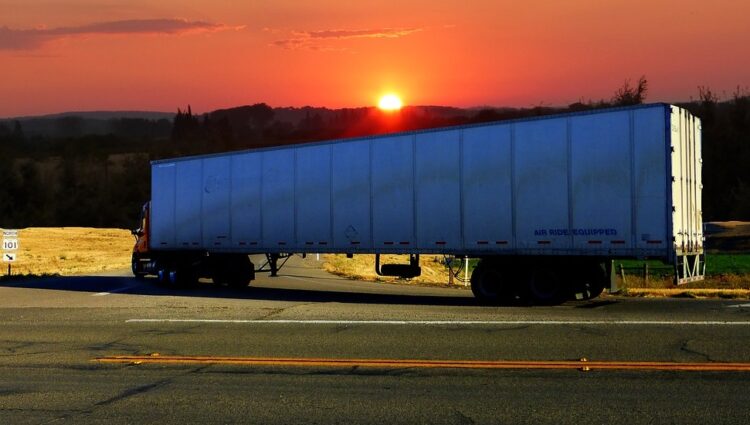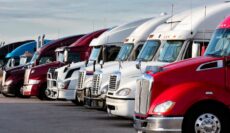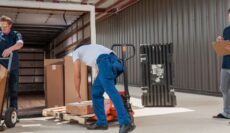Similar to other sectors, dry goods transportation has evolved over time and has now become an industry which makes use of the latest technological advancements for the proper transportation of food. In the following sections we will review the evolution that the food transportation industry has undergone overtime.
The Past, Present, and Future of the Food Transportation Industry
Even a few decades ago, it was common to have food delivered from the local farm. However, today the scenario is quite different and many of the meals we eat have ingredients that are grown in far off places that travel hundreds or thousands of miles before reaching our dinner table.
Today, food safety is directly related to how well or poorly it is being transported. Additionally, if the proper steps are not taken then food contamination can take place during transportation in the supply chain.
Such concerns have lead to focus being given to the advancement of food transportation technology by local freight companies. Let us now look at the evolution of the food transportation industry.
The Past
Prior to the Industrial Revolution, humans were primarily hunters and gatherers. Thus, there was hardly any development in the realm of food transportation and anything that was to be moved from one location to another was done on foot.
Gradually, assistance of domestic livestock was used for transportation of food from one place to another and can be considered a significant achievement in terms of transportation in this era.
The major invention was the introduction of the wheel in 3300 B.C. and can be considered a major development that eventually created the food transportation industry.
The Present
If we go back in time, we find that significant development was noticed in the food transportation industry in 19th century when the automobile and rail system become functional. At that time more emphasis was also given on improving the highway system so that transportation of goods could take place smoothly.
This lead to the inception of safe and secure food transportation from one place to another for the very first time. At that time, apart from being safe, it was also a less expensive and reliable method of transportation.
Gradually, with advancements in agricultural processes, the dependence on means of transportation such as trains, boats, planes, and trucks increased and it became possible to transport food items even to different continents within a short period of time.
At present, we have access to transportation carriers dry goods, to freight forwarding, and our refrigeration capabilities have also improved, resulting in better transportation of perishable food items like milk, meat, fish, and eggs.
Other socio-economic developments such as free trade agreements between countries are fueling growth of the food transportation industry and more countries are willing to import food items that they do not have the capabilities to produce within their country.
The Future
In the future, we expect to see more emphasis being given on the safety of food products while they are being transported. Several regulations have been enacted such as FSMA or Food Safety Modernization Act to make food transportation a safe and secure process.
FSMA and other similar regulations are trying to specify the sanitation practices that food transportation companies need to follow. Efforts are also being made to define the guidelines that companies need to adhere to with respect to the cleaning of carriers before food items are transported.
Similarly, we can expect more stringent guidelines to be set in place for proper refrigeration and protection of food items while they are being transported.
In the future, we will also see more technological advancements being used to bring down the cost of transportation and also to reduce the effect of greenhouse gases on our environment.
Some of the other spheres of food transportation where we will see major changes taking place include advancements in vessel technology, use of new controlled atmosphere methods, and better refrigeration techniques.
All these advancements will eventually lead to safer and secure transportation of food products from one place to another within a short period of time.
Food Transportation and Safety
Food safety is a major concern that we face in this era and regulatory authorities are doing their best to define rules and regulations that are to be followed to ensure that food is transported in a safe manner. Let us look at some of the rules that can improve how well food items are transported.
- Vehicle Inspection: Food transportation companies need to maintain proper documentation of vehicle inspection that is carried out before food items are loaded on to the vehicle.
- Cold Chain Verification: It is also necessary to verify as well as document the measures which have been implemented for maintaining the cold chain that is needed for items that need temperature and time control.
- Shippers Responsibilities: Shippers should inform carriers about sanitary needs that they require for a transportation vehicle. Additionally, shippers need to keep records that show that these details have to provide to carrier.
- Proof of Temperature Control: Carriers should keep proof that clearly shows that temperature control has been maintained during transit and provide such proof to shipper if it is requested.
- Details of Previous Cargo: It will also be necessary for carriers to offer details of previous cargo that was transported to shippers and details about steps that were taken to properly clean the vehicle before food items are shipped.
- Written Procedure: There should also be a written procedure in place that specifies how the needed information will be supplied to shippers as well as other interested parties.
- Details of Practices and Procedures: Last but not least, there should be written procedures that describe the practices and procedures companies follow with respect to inspection, sanitization, cleaning of all vehicles and their other transportation equipment.





